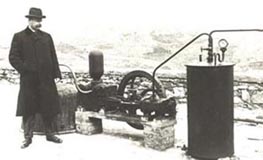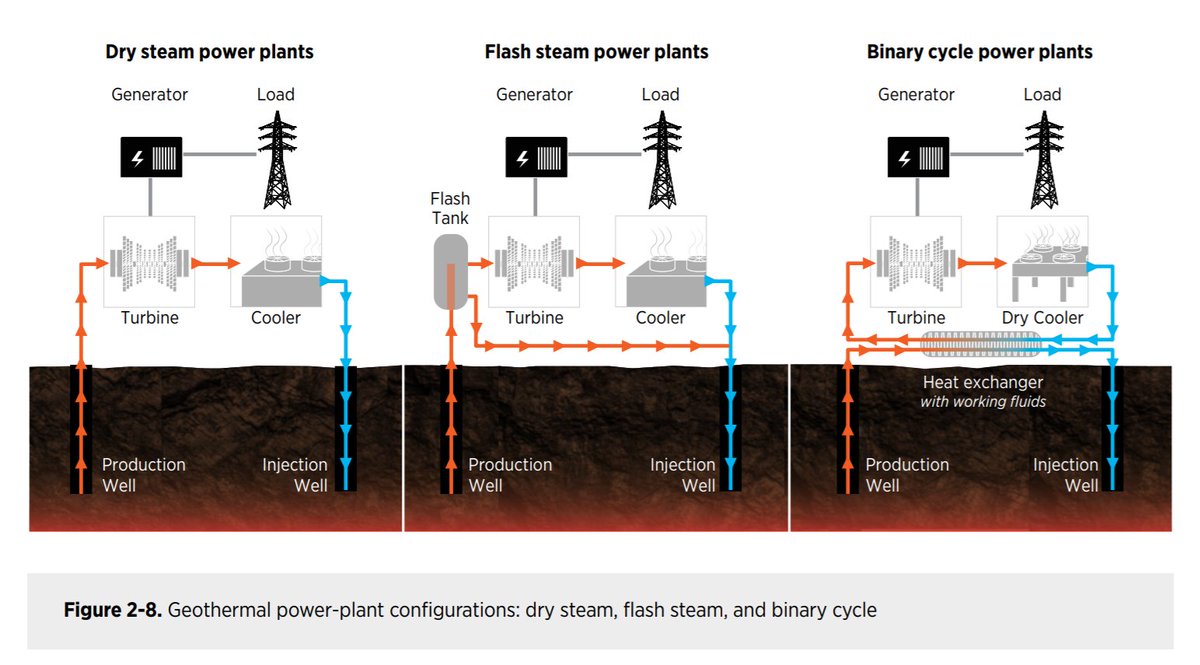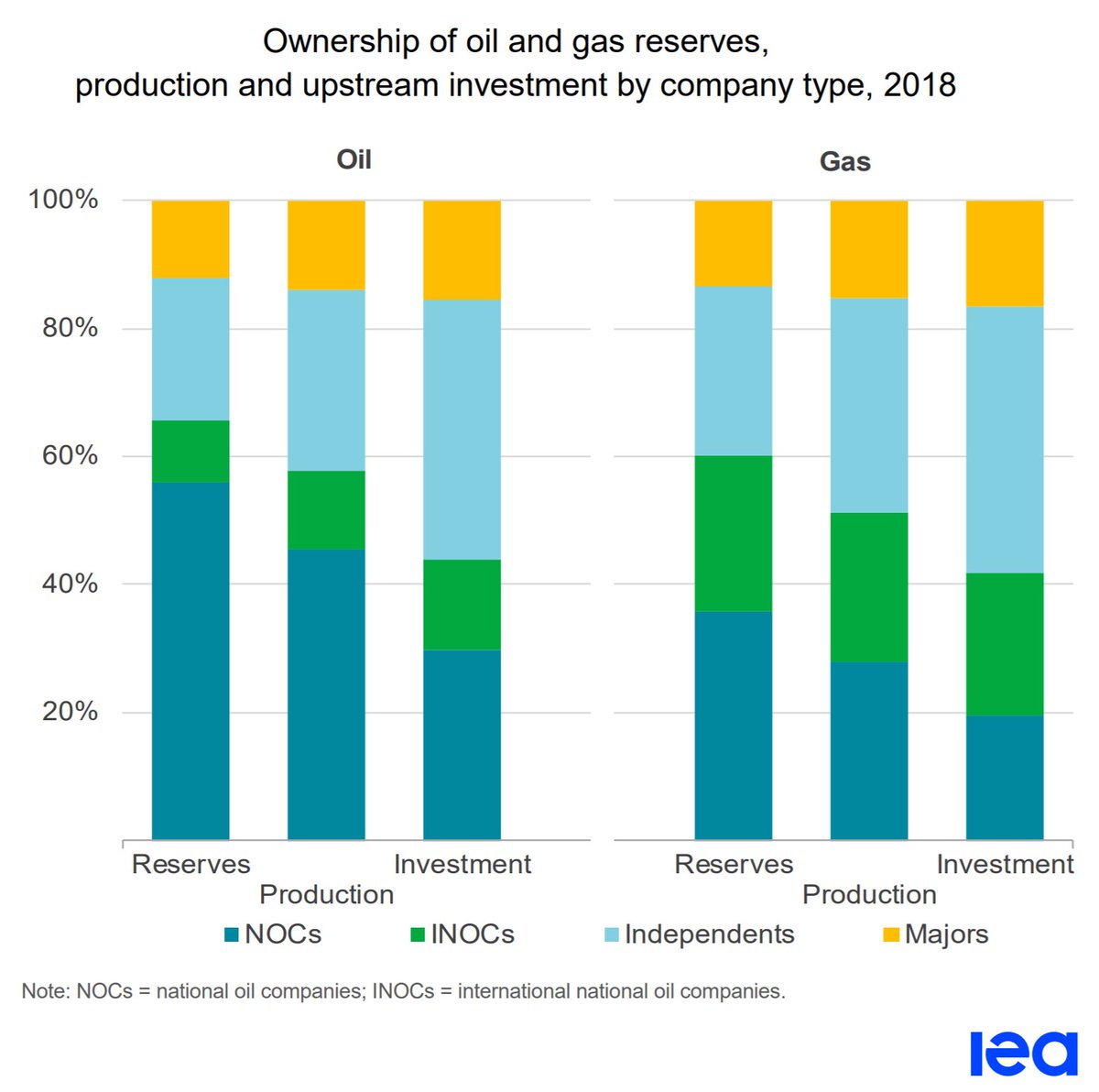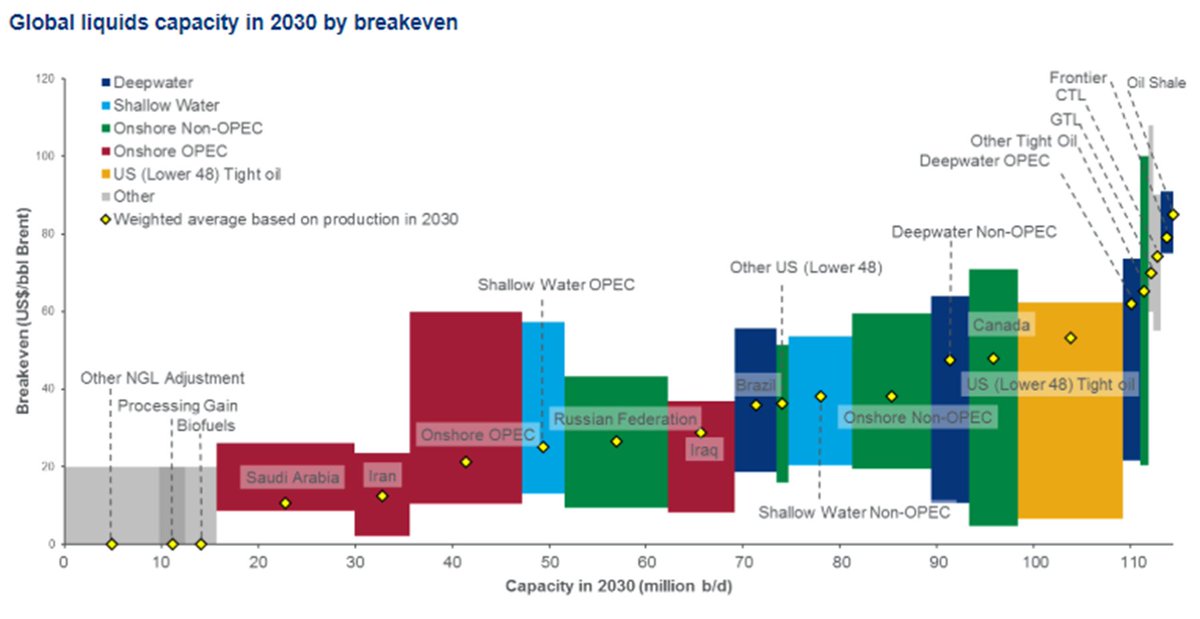
1/I recently read American Prometheus, about Robert Oppenheimer, to get some insight into rapid, large scale science innovation. Oppenheimer famously led the Manhattan Project that led to the atomic bomb. A lot of interesting lessons, so, a THREAD. 

2/The first reflection I had, which is counterintuitive and really wasn’t what I expected: the Manhattan Project was actually much smaller scale than I expected. What made it so successful wasn’t some outlandish budget, at least in modern terms.
3/Let me explain. The Manhattan Project spent ~$2B, or ~$20B ($4B/yr) in today’s dollars. An enormous amount, to be sure, but comparatively, smaller than the DOE budget today ($46B/yr) or even individual company R&D like Amazon (42B/yr). sgp.fas.org/crs/misc/RL346…
4/Of course these funds were concentrated to a single program, while today the DOE and companies fund many items, but I was actually shocked at the absolute funding level. I’d built it up in my head to be much more.
5/So if it wasn’t unprecedented (in modern terms) funding that led to the Manhattan Project’s success, what was it? I think three things played a major role:
-Timing
-Focus
-Bureaucratic streamlining
Let me explain.
-Timing
-Focus
-Bureaucratic streamlining
Let me explain.
6/TIMING. All applied engineering breakthroughs are preceded by basic science breakthroughs. This can lead to a common phenomenon in hard tech, one we call “overnight successes, decades in the making”. Once the right groundwork is laid, innovation can happen FAST.
7/In the Manhattan project, major science breakthroughs in atomic physics in the preceding decades laid the foundation for rapid Applied R&D. In Oppenheimer’s words:
“We took a tree with a lot of ripe fruit and shook it and out came radar and atomic bombs.”
“We took a tree with a lot of ripe fruit and shook it and out came radar and atomic bombs.”
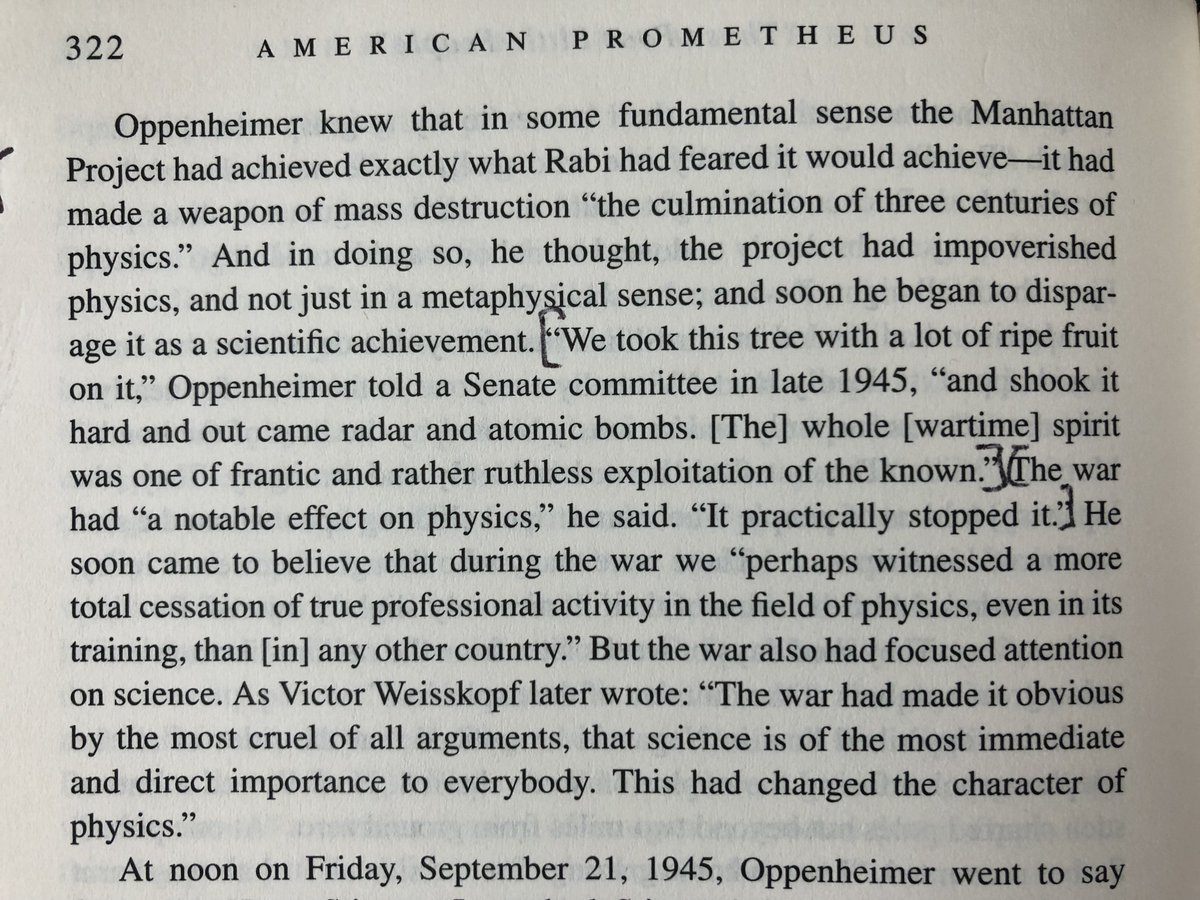
8/You can’t just manufacture a Manhattan Project out of nowhere, there has to be a basic foundation. Solar’s 2010s surge is a great example. Lot’s of R&D got the cost curve down over decades, and once it passed a cost tipping point, it had an explosion of growth. 



9/FOCUS. The life of a modern researcher is quite different than the focus achieved on the Manhattan project. In short, the administrative burden on researchers, as well as the lots-of-little-grants approach to funding leaves our researchers spread thin.
https://twitter.com/TimMLatimer/status/1341057283837603846?s=20
10/Researchers at the Manhattan Project got to put 100% of their time and attention into executing one project. Modern researchers spend the majority of their time dealing with administrative tasks, and even when they do research it’s very scattered.
11/In the modern funding system, most researchers apportion their time a little here, a little there, 20% to a grant, 33% to another, etc. This constant switching, and wild swings in timeline due to external factors like award negotiation, doesn’t leave a lot of time for FOCUS.
12/BUREAUCRATIC STREAMLINING. Given the urgency of the war effort, and the fact that the Manhattan Project predated a lot of review laws, they did things exceptionally quickly. Some of the anecdotes on project development are shocking in a modern context.
13/For example, when it came time to pick a test site, Oppenheimer just scouted an area in the New Mexico desert on horseback, picked it, and then cleared an area using eminent domain. That was it. No permits, review, stakeholder engagement. Nothing. 

14/Of course this isn’t possible now, nor should it be. Many of the permits and reviews we have today are vital to protecting the environment, people, and historical significance of regions. But in many cases modern restrictions prevent anything from happening.
15/Take for example geothermal permitting. NREL found a single project can invoke 6 different Environmental Assessments, each taking 10 months to complete. In fact the majority of the development timeline is spent waiting on permits. osti.gov/pages/servlets… 
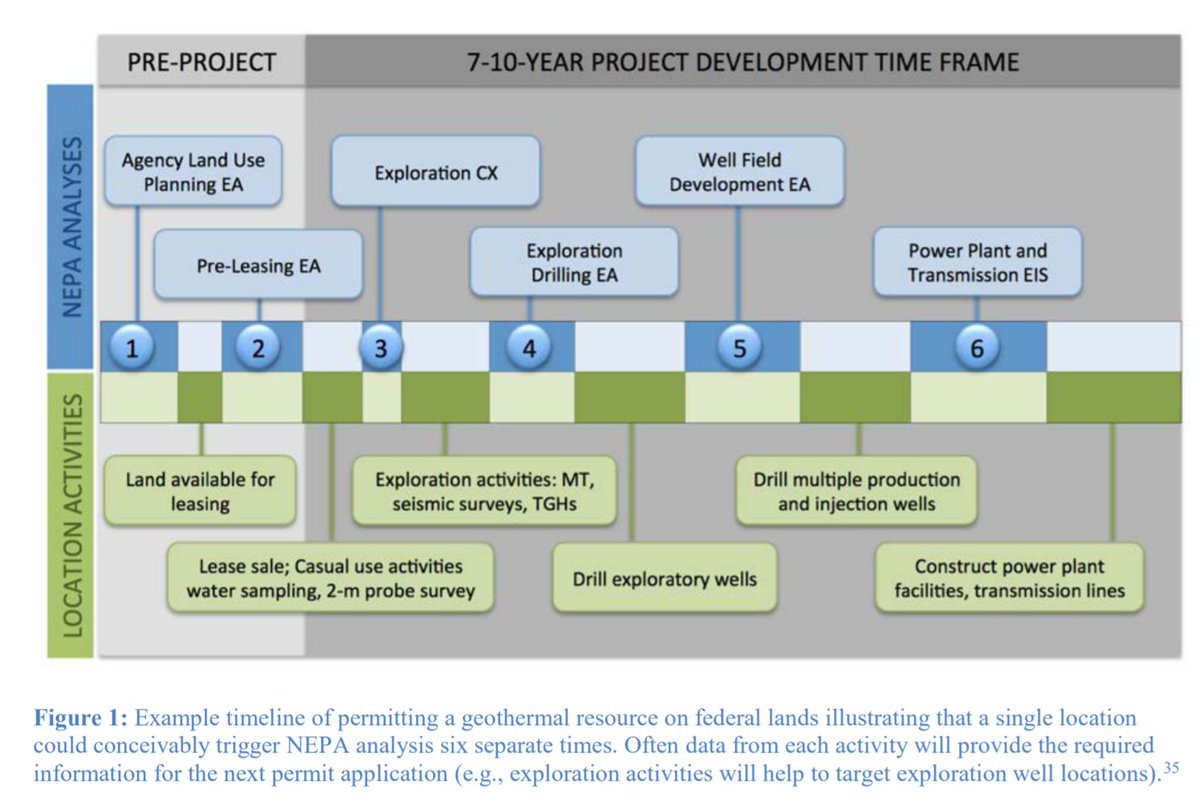
16/NREL also found we could double the geothermal in the US from just shortening this timeline by two years. Timelines the most underappreciated factors in science innovation, and the Manhattan Project was a success in part because it could move at a rapid timeline.
17/There are a lot of lessons for modern innovation that we can learn from the Manhattan Project, and thankfully the lessons aren’t just spend more money. We can reinvigorate innovation in climate change and other fields from improving the research process.
18/TIMING. It’s key we keep spending on basic science and early stage innovation. Conceptual breakthroughs of today will become the trees we shake fruit from in the future. Nothing is too urgent to abandon basic science and innovation spending.
19/FOCUS. We must trust our researchers more. Researchers should be able to get funded quickly, have more autonomy, and be able to focus more on singular projects. I hope we see a lot more programs like Fast Grants that @patrickc writes about here.
https://twitter.com/patrickc/status/1404782390740807691?lang=en
20/STREAMLINING. We need to find a better balance between careful planning and actually building things. Innovation, particularly in solving climate change, is going to require us to build. A lot. @jtemple has a great overview here.
technologyreview.com/2020/01/15/130…
technologyreview.com/2020/01/15/130…
21/I’m encouraged that there are more lessons from the Manhattan Project beyond just spend a ton of money. We can do big things in science, fast, and it’s going to help us solve climate change. We just need the right focus. END
PS: The creation of the atomic bomb is a controversial topic, one the author's of American Prometheus do a great job discussing. It's complicated, especially during the total war of WWII, and the ethics are to tough to get into on twitter, so this thread is just on science.
• • •
Missing some Tweet in this thread? You can try to
force a refresh






